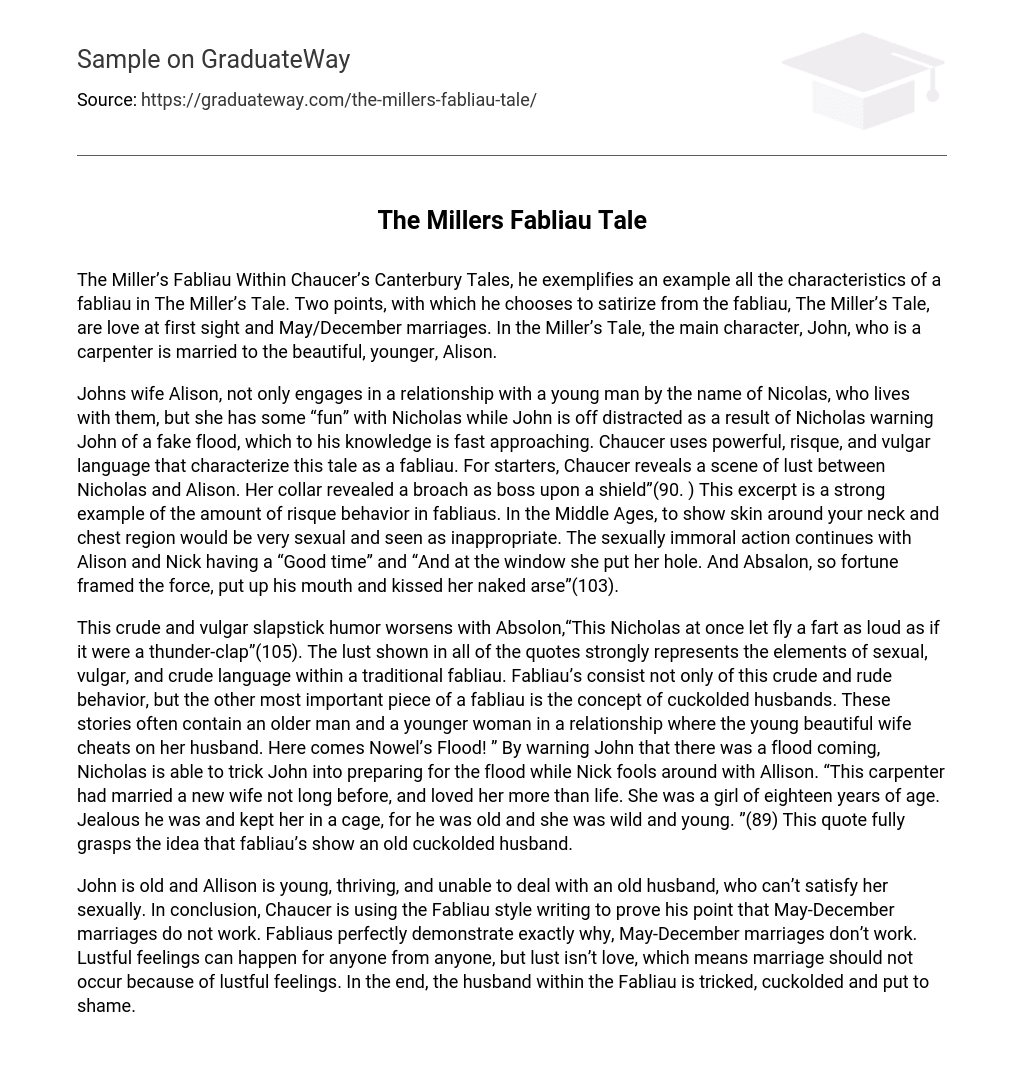The Miller’s Fabliau Within Chaucer’s Canterbury Tales, he exemplifies an example all the characteristics of a fabliau in The Miller’s Tale. Two points, with which he chooses to satirize from the fabliau, The Miller’s Tale, are love at first sight and May/December marriages. In the Miller’s Tale, the main character, John, who is a carpenter is married to the beautiful, younger, Alison.
Johns wife Alison, not only engages in a relationship with a young man by the name of Nicolas, who lives with them, but she has some “fun” with Nicholas while John is off distracted as a result of Nicholas warning John of a fake flood, which to his knowledge is fast approaching. Chaucer uses powerful, risque, and vulgar language that characterize this tale as a fabliau. For starters, Chaucer reveals a scene of lust between Nicholas and Alison. Her collar revealed a broach as boss upon a shield”(90. ) This excerpt is a strong example of the amount of risque behavior in fabliaus. In the Middle Ages, to show skin around your neck and chest region would be very sexual and seen as inappropriate. The sexually immoral action continues with Alison and Nick having a “Good time” and “And at the window she put her hole. And Absalon, so fortune framed the force, put up his mouth and kissed her naked arse”(103).
This crude and vulgar slapstick humor worsens with Absolon,“This Nicholas at once let fly a fart as loud as if it were a thunder-clap”(105). The lust shown in all of the quotes strongly represents the elements of sexual, vulgar, and crude language within a traditional fabliau. Fabliau’s consist not only of this crude and rude behavior, but the other most important piece of a fabliau is the concept of cuckolded husbands. These stories often contain an older man and a younger woman in a relationship where the young beautiful wife cheats on her husband. Here comes Nowel’s Flood! ” By warning John that there was a flood coming, Nicholas is able to trick John into preparing for the flood while Nick fools around with Allison. “This carpenter had married a new wife not long before, and loved her more than life. She was a girl of eighteen years of age. Jealous he was and kept her in a cage, for he was old and she was wild and young. ”(89) This quote fully grasps the idea that fabliau’s show an old cuckolded husband.
John is old and Allison is young, thriving, and unable to deal with an old husband, who can’t satisfy her sexually. In conclusion, Chaucer is using the Fabliau style writing to prove his point that May-December marriages do not work. Fabliaus perfectly demonstrate exactly why, May-December marriages don’t work. Lustful feelings can happen for anyone from anyone, but lust isn’t love, which means marriage should not occur because of lustful feelings. In the end, the husband within the Fabliau is tricked, cuckolded and put to shame.





